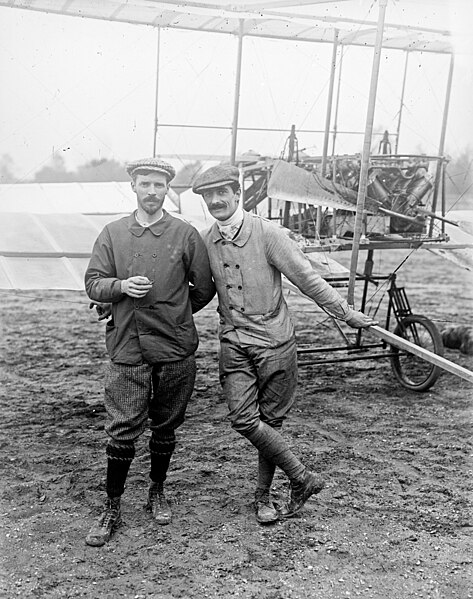The 1907 Voisin biplane, was Europe's first successful powered aircraft, designed by aeronautical engineer and manufacturer Gabriel Voisin. It was used by the French aviator Henri Farman to make the first heavier-than-air flight lasting more than a minute in Europe, and also to make the first full circle.
The first examples of the aircraft were known by the name of their owners, for instance the Delagrange I, or the Henri Farman n°1. Farman made many modifications to his aircraft, and these were incorporated into later production aircraft built by Voisin. The type enjoyed widespread success, and around sixty were built.
Voisin 1907 biplane
Edmond Poillot flying a Voisin biplane with a dog, Smithsonian National Air and Space Museum
Henry Farman (left) with Gabriel Voisin
Farman and Archdeacon at Ghent, May 1908
Gabriel Voisin was a French aviation pioneer and the creator of Europe's first manned, engine-powered, heavier-than-air aircraft capable of a sustained (1 km), circular, controlled flight, which was made by Henry Farman on 13 January 1908 near Paris, France. During World War I the company founded by Voisin became a major producer of military aircraft, notably the Voisin III. Subsequently, he switched to the design and production of luxury automobiles under the name Avions Voisin.
Gabriel Voisin
Voisin with Henry Farman (left), 1908
Gabriel (left) and Charles Voisin in 1906






